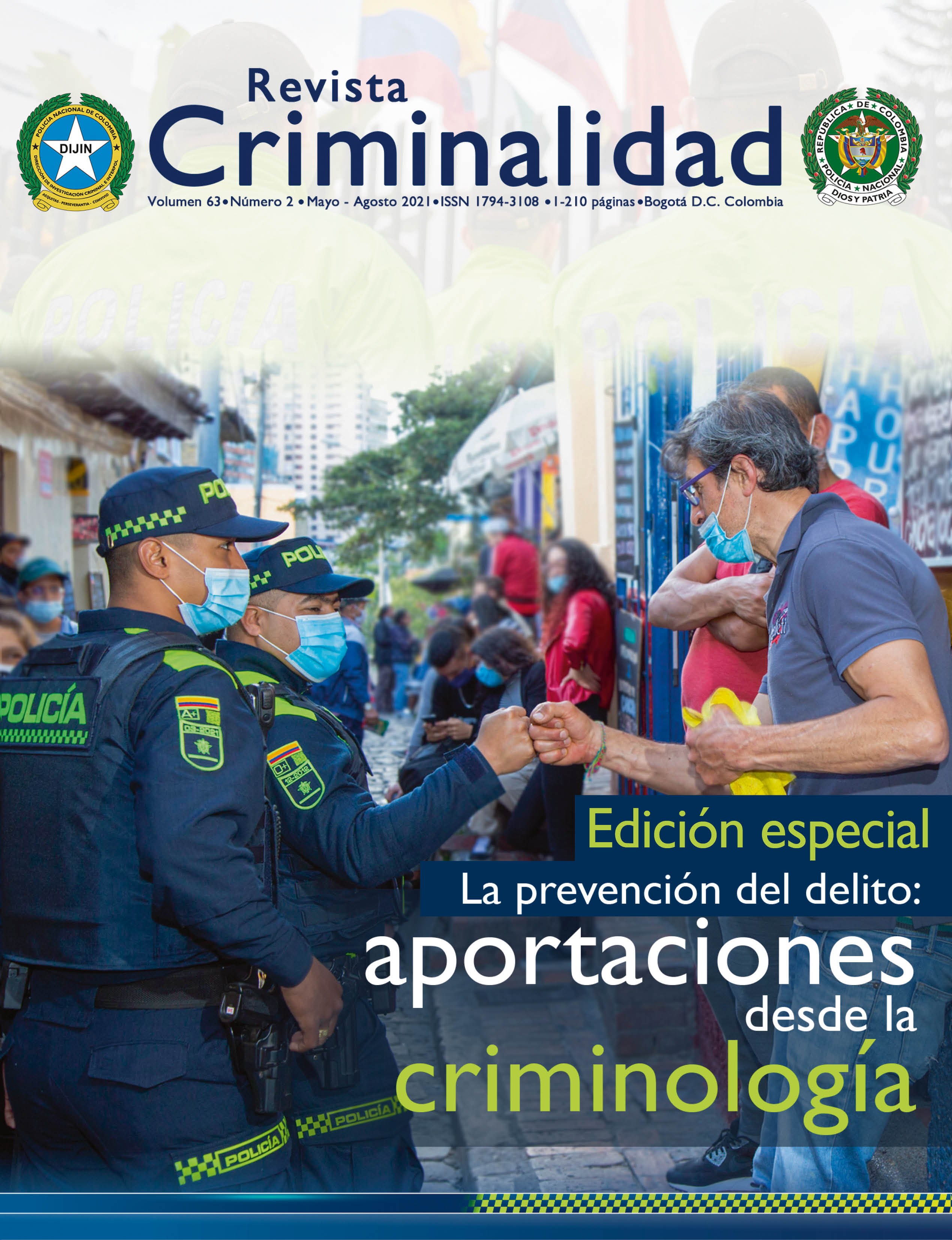Racism and children: reflections for a more just society
DOI:
https://doi.org/10.47741/17943108.319Keywords:
Racism, discrimination, Violence prevention, culture of peace, Outdoor educationAbstract
This article addresses racism as one of the expressions of discrimination with the greatest impact on various domains of children’s development and on society. Its consequences on physical and mental health are associated with alcoholism, drug use and domestic violence. Therefore, it becomes necessary to analyze the way in which children perceive the differences in phenotypes, beliefs and cultures between human beings and propose intervention strategies that reduce racism from school environments. As instruments, two exercises are presented with children between 10 and 12 years old, students of public schools from three communities located in the state of Puebla, in Mexico. The results reflect the social constructions that children have about differences such as skin color or other physical characteristics, as well as the perception of what it means to be rich or poor, having a marked preference towards people with white complexion, blond hair and light eyes, in contrast to people with black or brown complexions, black hair and dark eyes. The discussions deepen the implications of these results and present some intervention strategies aimed at parents and teachers.
Downloads
References
Abrego, M. (2009). Propuesta de educación y cultura de paz para la ciudad de Puebla (México) [Tesis doctoral, Universidad de Granada, Instituto de la Paz y los Conflictos]. Repositorio Institucional – Universidad de Granada. https://digibug.ugr.es/handle/10481/2161
Bahajin, S. (2018, septiembre-diciembre). La educación como instrumento de la cultura de paz. Innovación Educativa, 18 (78), 93-111. http://www.scielo.org.mx/pdf/ie/v18n78/1665-2673-ie-18-78-93.pdf
Baquedano, C., y Echeverría, R. (2013). Competencias psicosociales para la convivencia escolar libre de violencia: Experiencia en una primaria pública de Mérida, Yucatán, México. Psicoperspectivas, 12 (1), 139-160. https://www.redalyc.org/articulo.oaid=171025597010
Cabezudo, A. (2013, enero-abril). Acerca de una educación para la paz, los derechos humanos y el desarme: Desafío pedagógico de nuestro tiempo. Educação, 36 (1), 44-49. https://www.redalyc.org/articulo.oa?id=84825694007
Centro Nacional de Prevención y Control de Lesiones. (2016). Preventing Multiple Forms of Violence: A Strategic Vision for Connecting the Dots. Centro Nacional de Prevención y Control de Lesiones. https://www.cdc.gov/violenceprevention/pdf/Strategic_Vision.pdf
Delpit, L. (2012). Multiplication is for White People: Raising Expectations for other People’s Children. The New Press.
Derman-Sparks, L., LeeKeenan, D., & Nimmo, J. (2015). Leading Anti-Bias Early Childhood Programs: A Guide for Change. Teachers College Press / National Association for the Education of Young Children.
Duarte, J. (2015). Informe técnico del proyecto de investigación. Modelo de prevención e intervención de la violencia escolar en Hermosillo. Centro Regional de Formación Docente e Investigación Educativa del Estado de Sonora. https://docplayer.es/12314312-Informetecnico-del-proyecto-de-investigacion.html
Feagin, J. (2006). Systemic Racism: A Theory of Oppression. Routledge.
Flook, L., Goldberg, S., Pinger, L., & Davidson, R. (2015). Promoting Prosocial Behavior and Self-Regulatory Skills in Preschool Children Through a Mindfulness-Based Kindness Curriculum. Developmental Psychology, 51(1), 44-51. https://centerhealthyminds.org/assets/files-publications/FlookPromotingDevPsych.pdf
Gall, O. (2004). Identidad, exclusión y racismo: reflexiones teóricas sobre México. Revista Mexicana de Sociología, 66(2), 221-259. http://revistamexicanadesociologia.unam.mx/index.php/rms/article/view/5991/5512
Hartog, G., Greathouse, L., & García, J. (2005). Matices sociales del color de la piel en México: claroscuro sobre una realidad oculta. Benemérita Universidad Autónoma de Puebla.
Harvey, J. (2017, 14 de marzo). Are we raising racists? The New York Times. www.nytimes.com/2017/03/14/opinion/are-we-raisingracists.html
Hernández, R., Fernández, C., & Baptista, L. (2014). Metodología de la investigación (6ª ed.). McGraw Hill.
Instituto Nacional de Estadística y Geografía [INEGI]. (2017). Encuesta nacional sobre discriminación. INEGI. https://www.inegi.org.mx/programas/enadis/2017/
Instituto Nacional de Estadística y Geografía [INEGI]. (2020). Estadísticas a propósito del Día Internacional de la Eliminación de la Discriminación Racial (21 de marzo). https://www.inegi.org.mx/contenidos/saladeprensa/aproposito/2020/DISCRIMINAC_NAL.pdf
Ladson-Billings, G. (2009). The Dreamkeepers: Successful Teachers of African American Children (2a ed.). Jossey-Bass.
Liebel, M. (2017). Infancias latinoamericanas: civilización racista y limpieza social. Ensayo sobre violencias coloniales y postcoloniales. Sociedad e Infancias, 1, 19-38. https://revistas.ucm.es/index.php/SOCI/article/view/55646
Loredo, A., Perea, A., & López, G. (2008, julio-agosto). “Bullying”: acoso escolar. La violencia entre iguales. Problemática real en adolescentes. Acta Pediátrica de México, 29 (4), 210-214. https://www.medigraphic.com/pdfs/actpedmex/apm2008/apm084e.pdf
París, M. (2002). Estudios sobre el racismo en América Latina. Política y Cultura, 17, 289-310. https://www.redalyc.org/pdf/267/26701714.pdf
Pitts, J. (2016). Don’t say nothing. Teaching Tolerance, 54. www.tolerance.org/magazine/tt54-fall-2016/feature/dont-say-nothing
Poon, O. (2017). Our schools need to teach a fourth ‘R’: racial literacy. Rewire News. https://rewire.news/article/2017/03/01/schools-need-teachfourth-r-racial-literacy/
Ramsey, P. (2015). Teaching and Learning in a Diverse World: Multicultural Education for Young Children (4a ed.). New York, USA: Teachers College Press.
Tatum, B. (2003). Why Are All the Black Kids Sitting Together in the Cafeteria?: And Other Conversations About Race. Basic Books.
Valencia, M. (2018). “Esta boda de ahí viene, de los cerros, de los volcanes, de ahí es”. La boda Nealtican en contextos de asimilación cultural y desplazamiento del náhuatl de la región de Puebla [Tesis de maestría, Universidad Mayor de San Simón]. http://biblioteca.proeibandes.org/wp-content/uploads/2018/09/Tesis-MarthaGriselda-Valencia-S%C3%A1nchez.pdf
Velasco, S., & Baronnet, B. (2016). Racismo y escuela en México: reconociendo la tragedia para intentar la salida. Diálogos sobre Educación. Temas Actuales en Investigación Educativa, 7(13), 1-19. https://www.redalyc.org/jatsRepo/5534/553458105019/553458105019.pdf
Winkler, E. (2009). Children are not colorblind: how young children learn race. PACE: Practical Approaches for Continuing Education, 3(3), 1-8. https://inclusions.org/wp-content/uploads/2017/11/Children-are-Not-Colorblind.pdf
Wright, B., Counsell, S., & Tate, S. (2015). We’re many members, but one body: fostering a healthy self-identity and agency in African American boys. Young Children, 70(3), 24-31. https://www.researchgate.net/publication/280610129_We're_Many_Members_but_One_Body_Fostering_a_Healthy_Self-Identity_and_Agency_in_African_American_Boys
Published
How to Cite
Issue
Section
License
Copyright (c) 2021 Revista Criminalidad

This work is licensed under a Creative Commons Attribution-NonCommercial-NoDerivatives 4.0 International License.
Licencia creative commons CC BY NC ND https://creativecommons.org/licenses/by-nc-nd/2.0/














